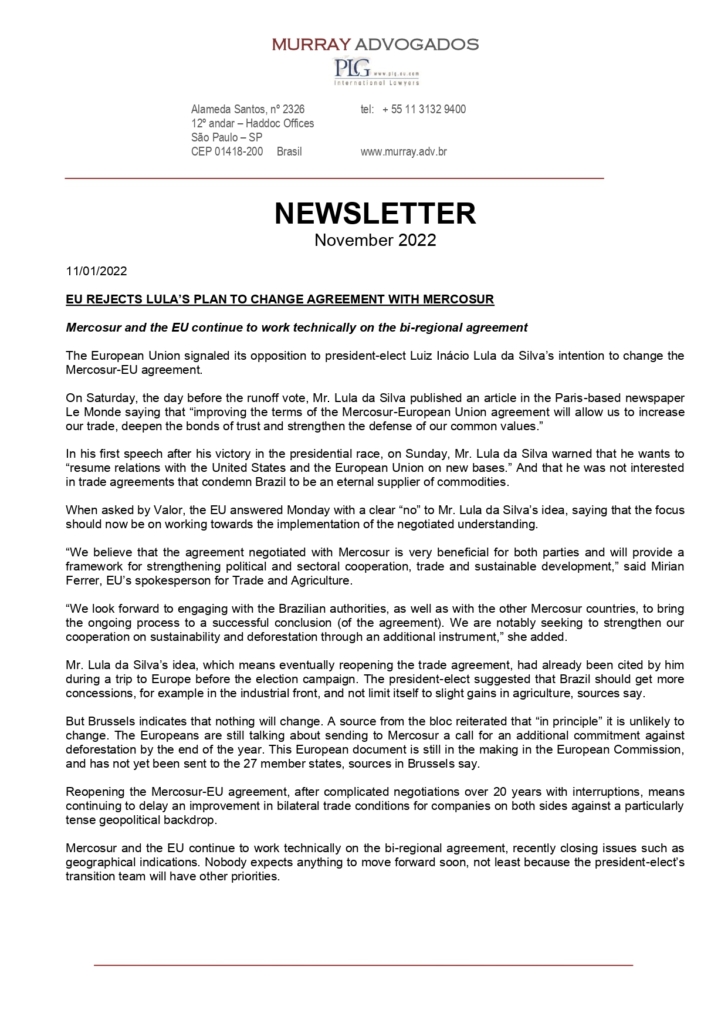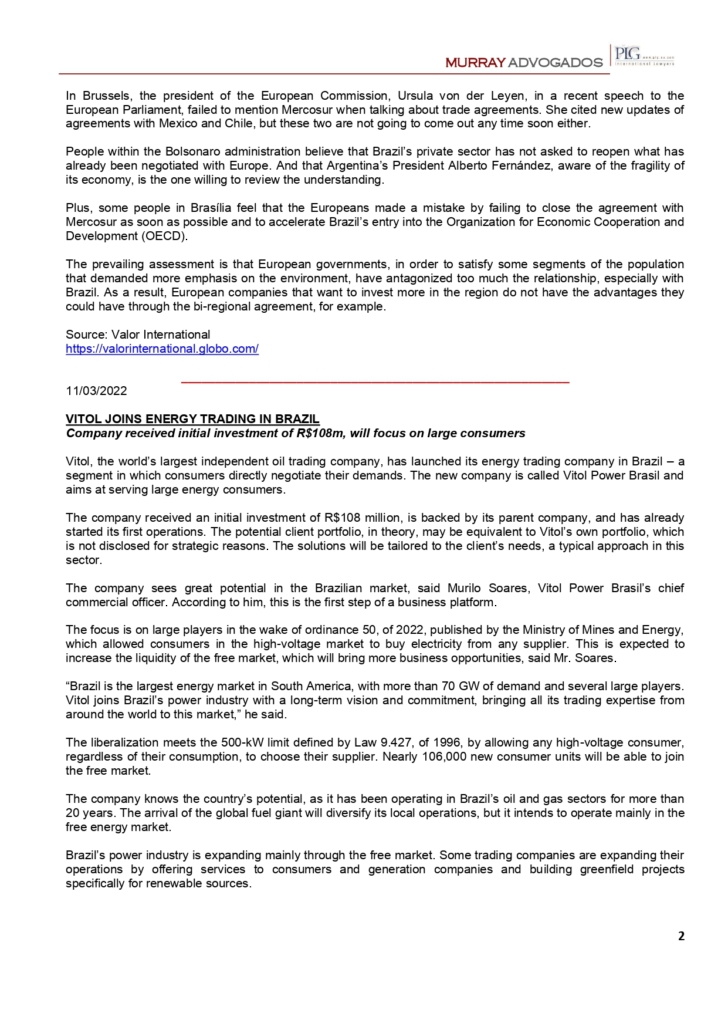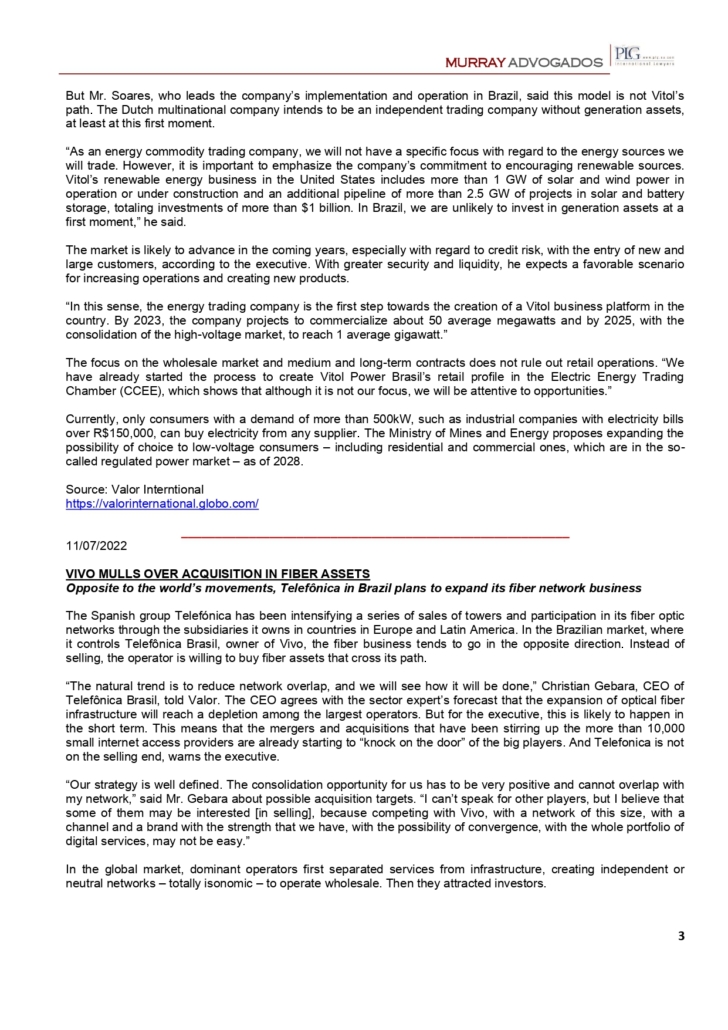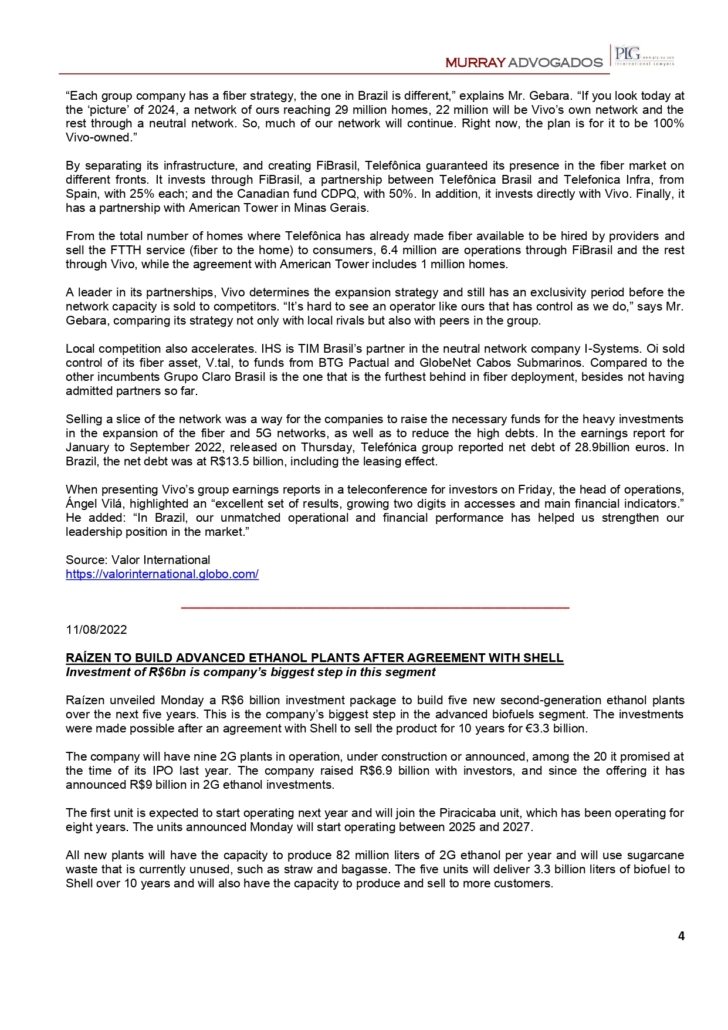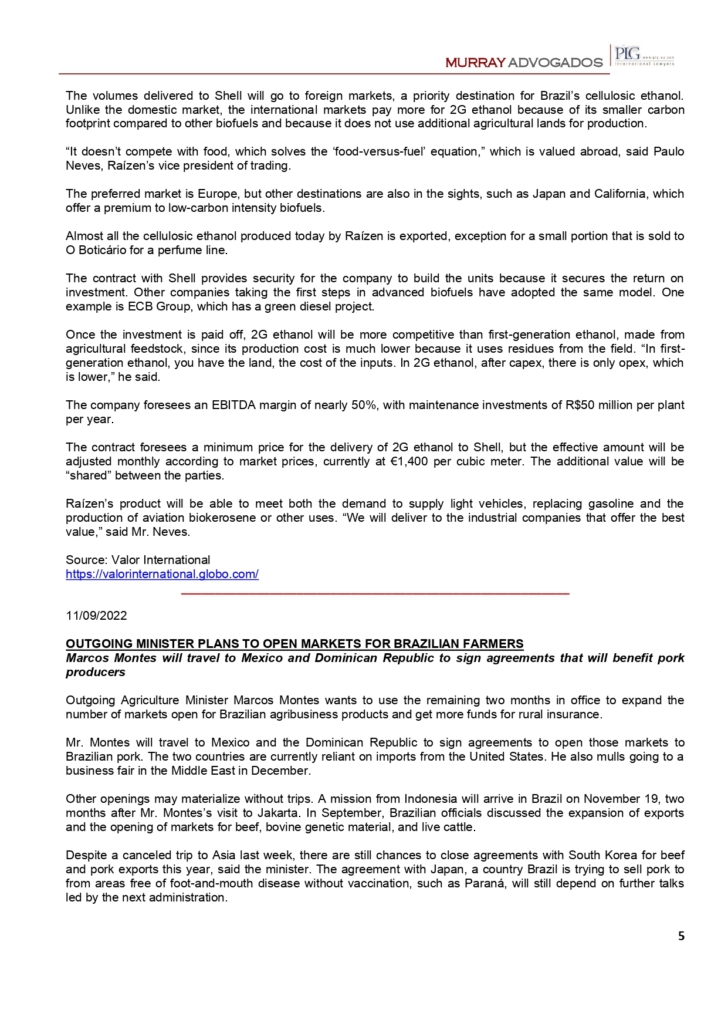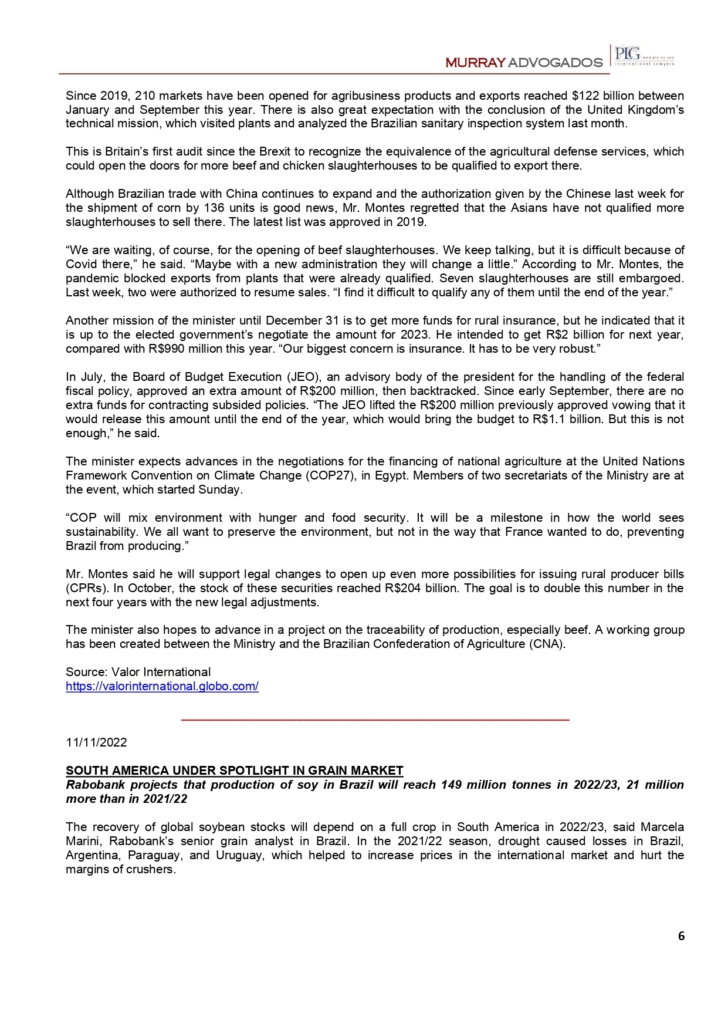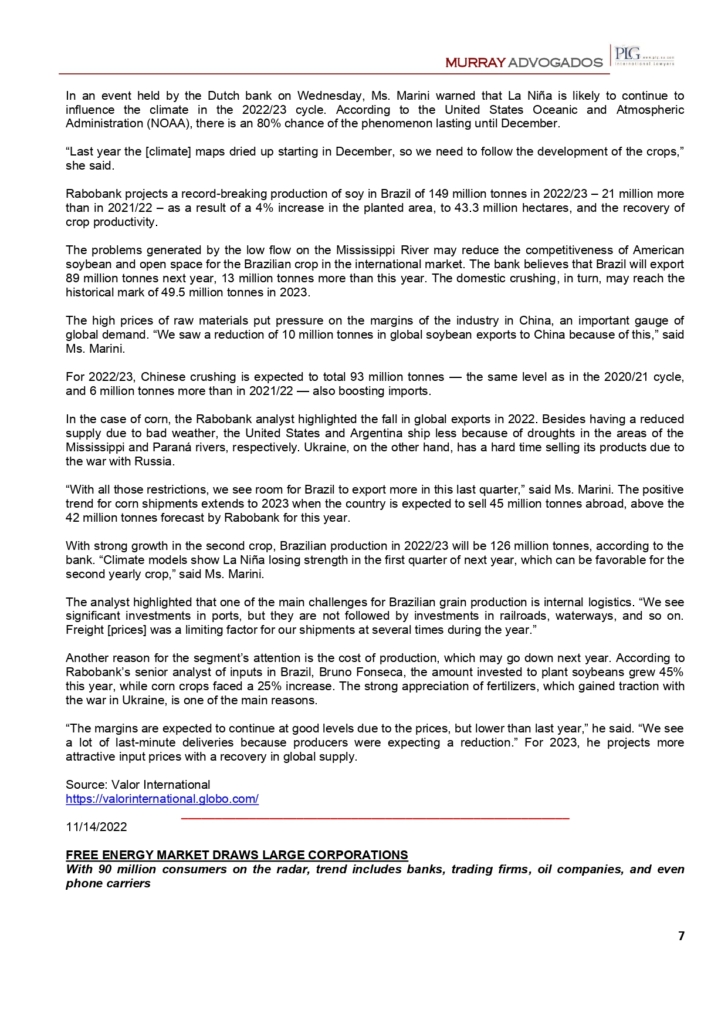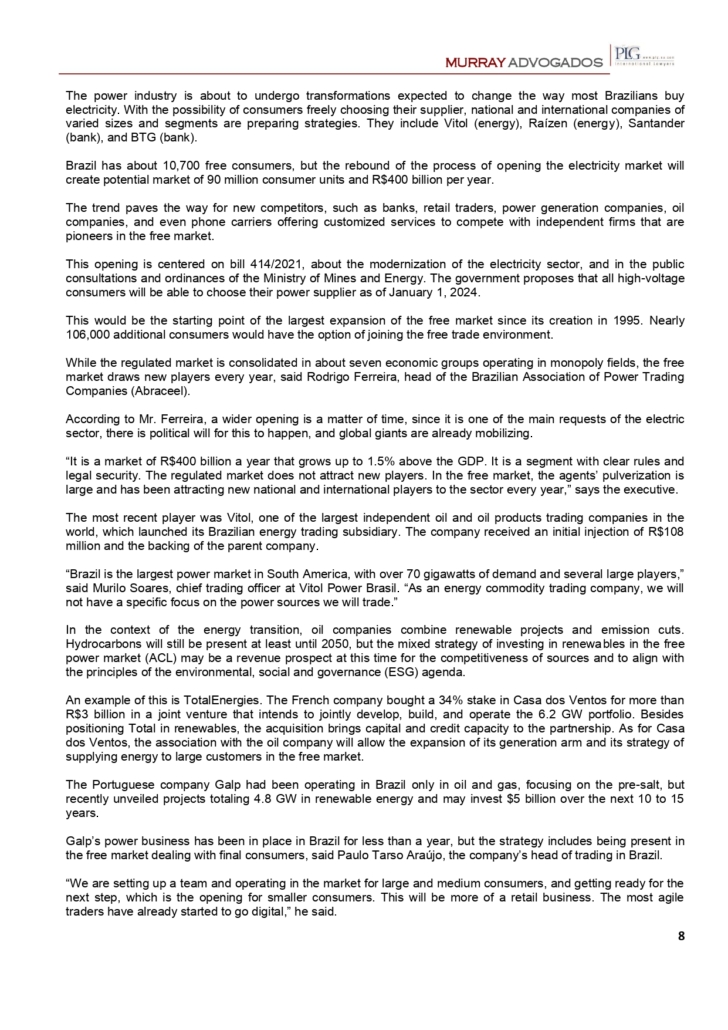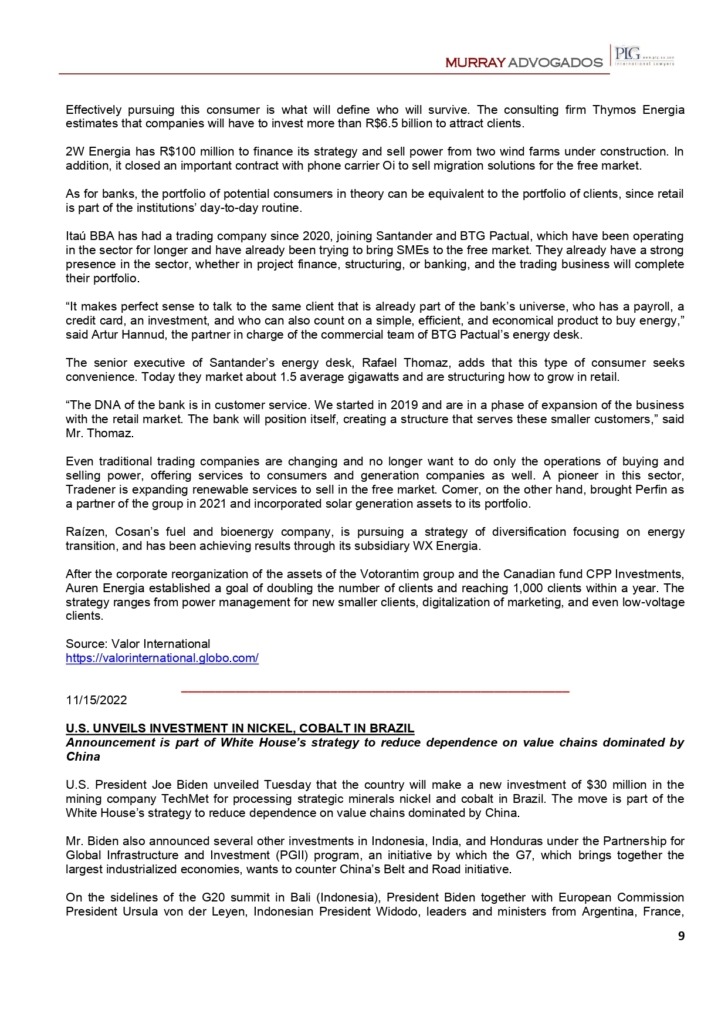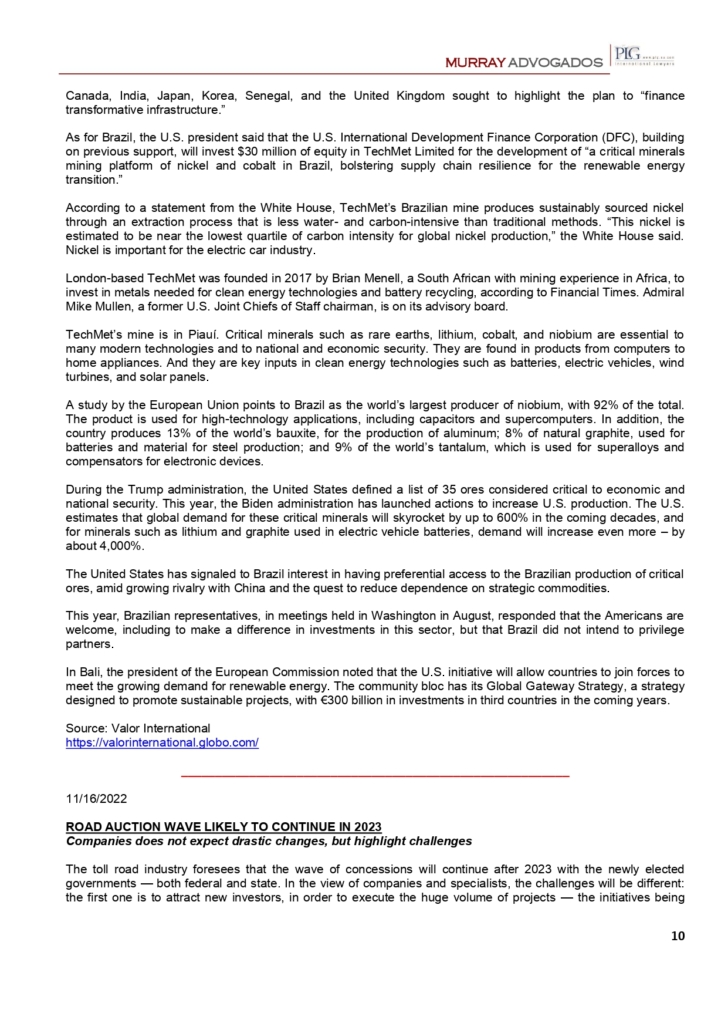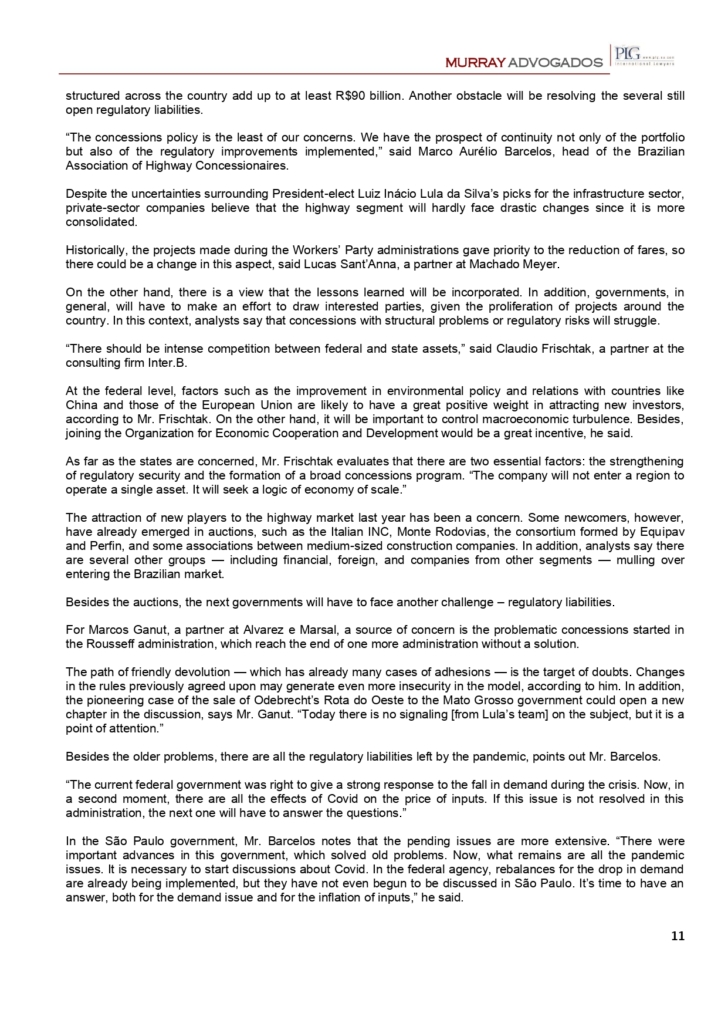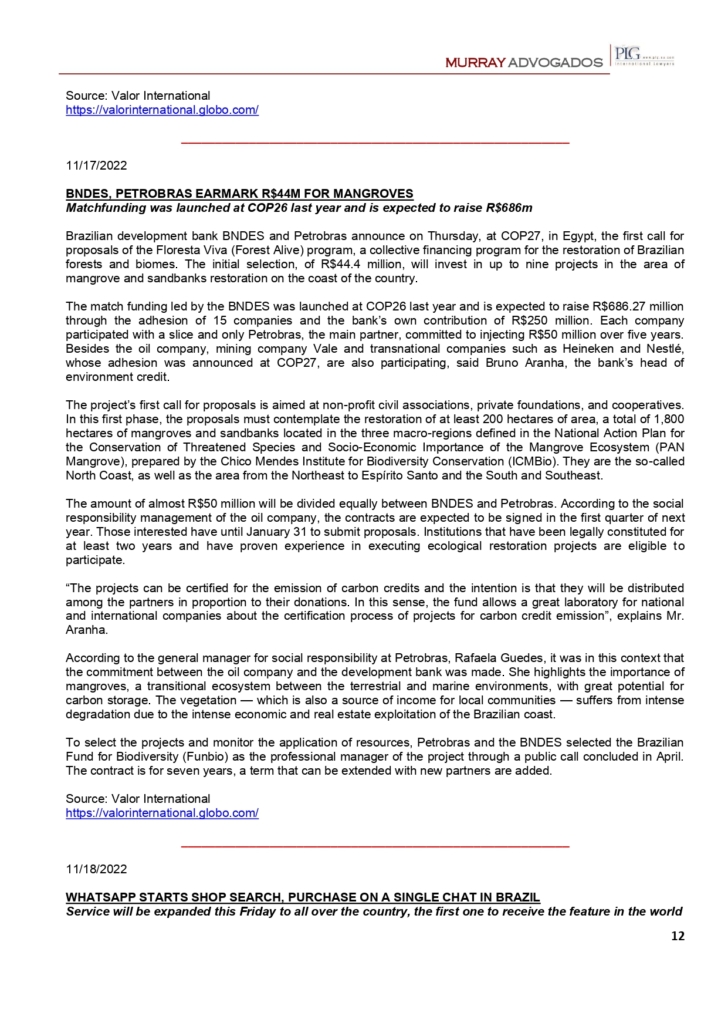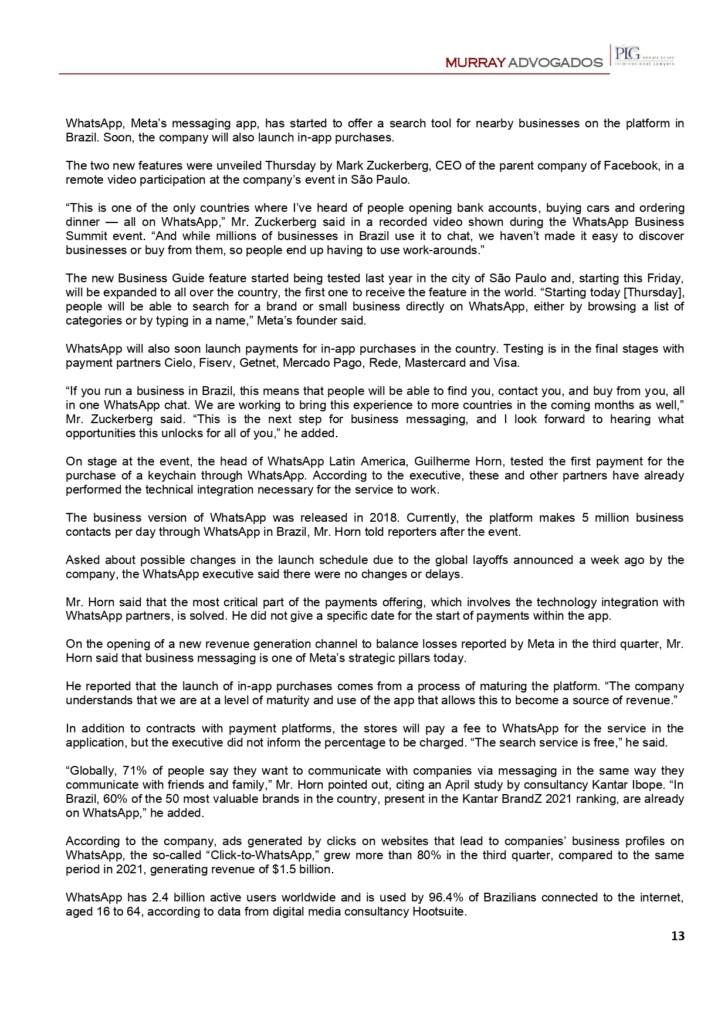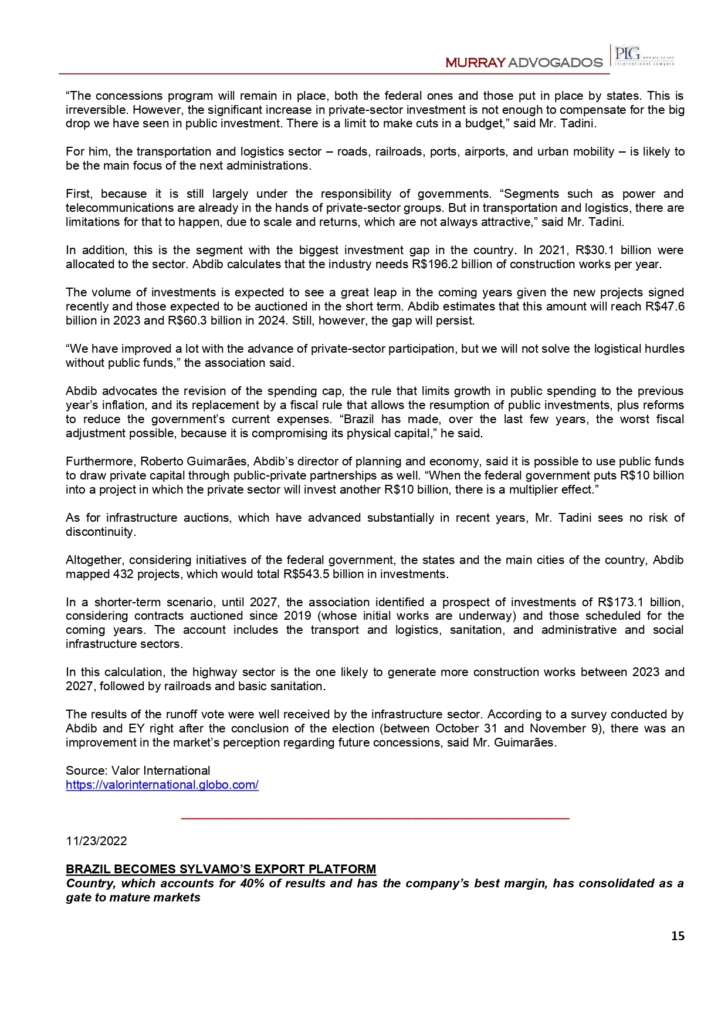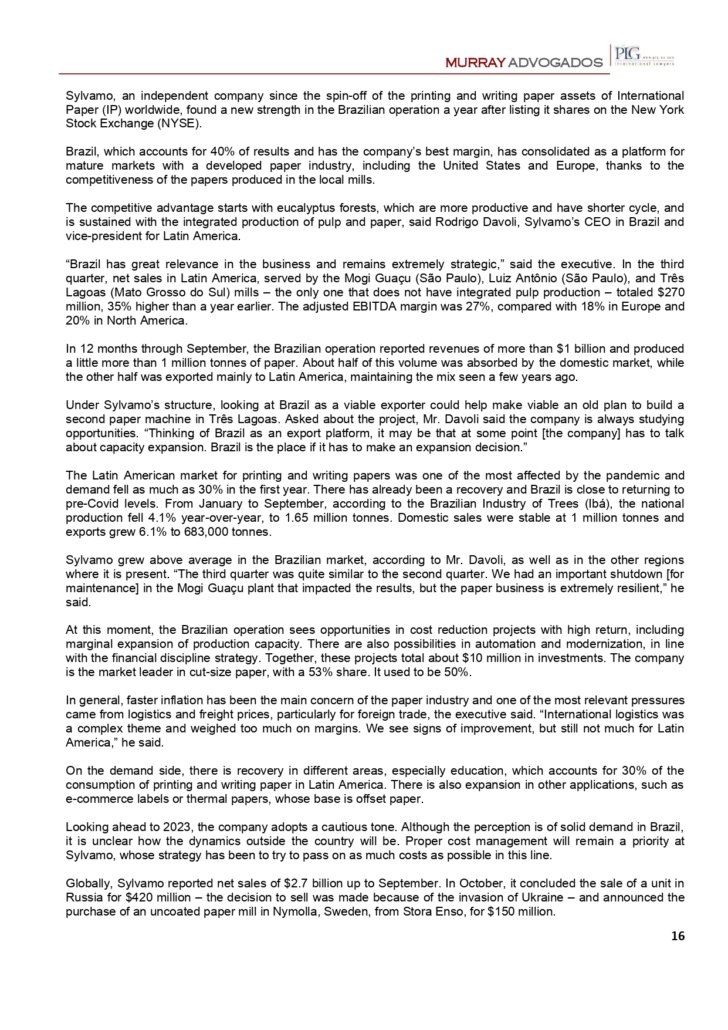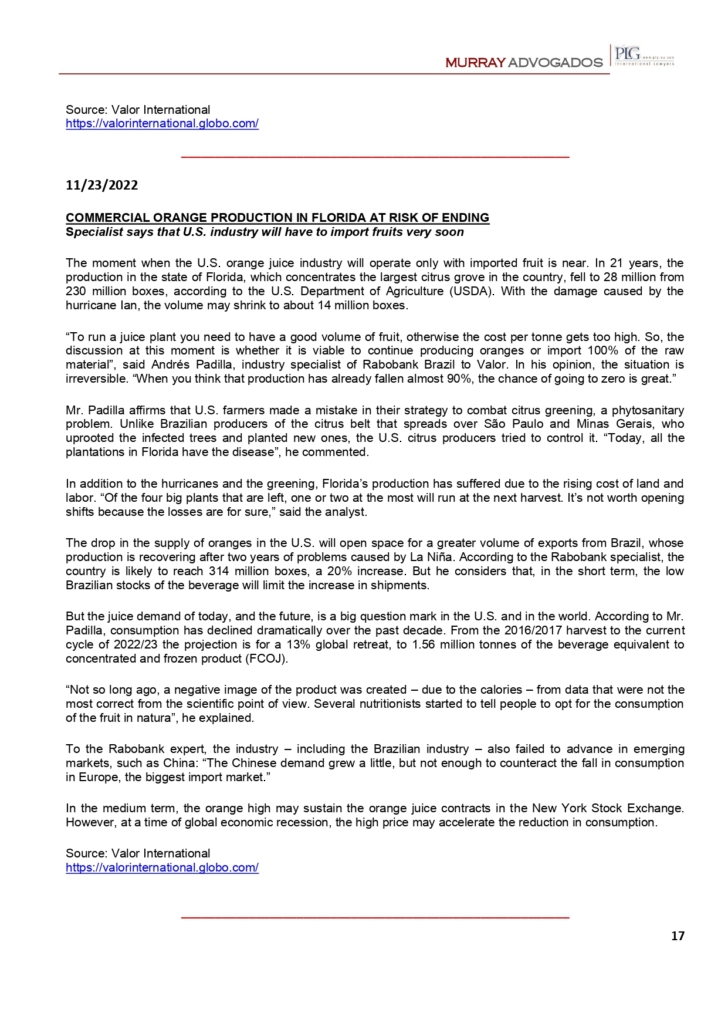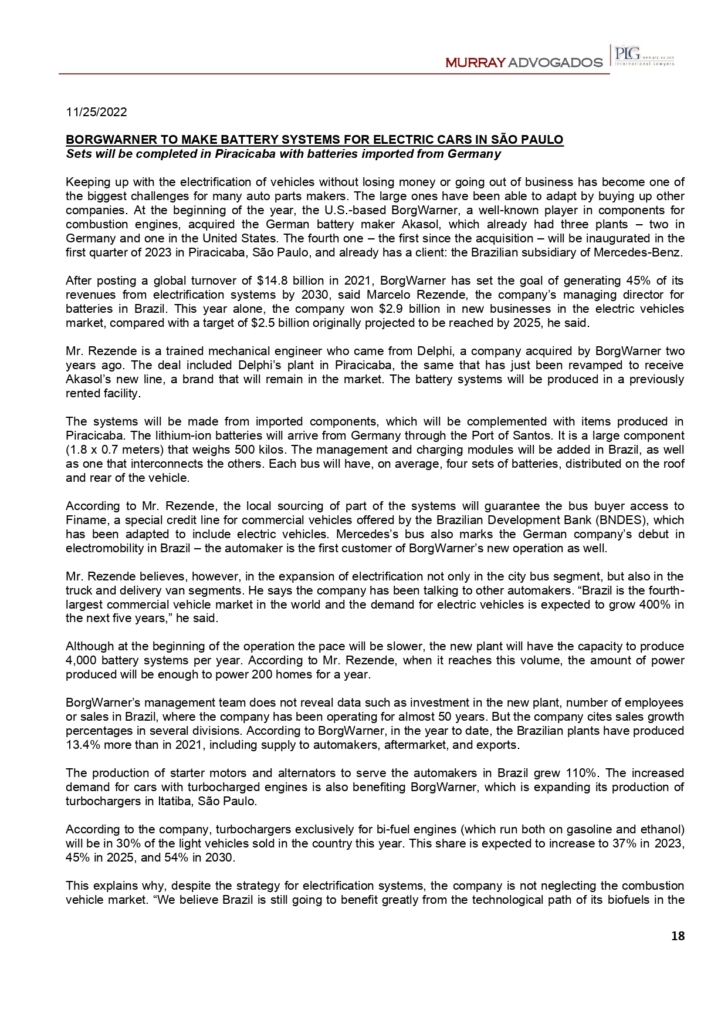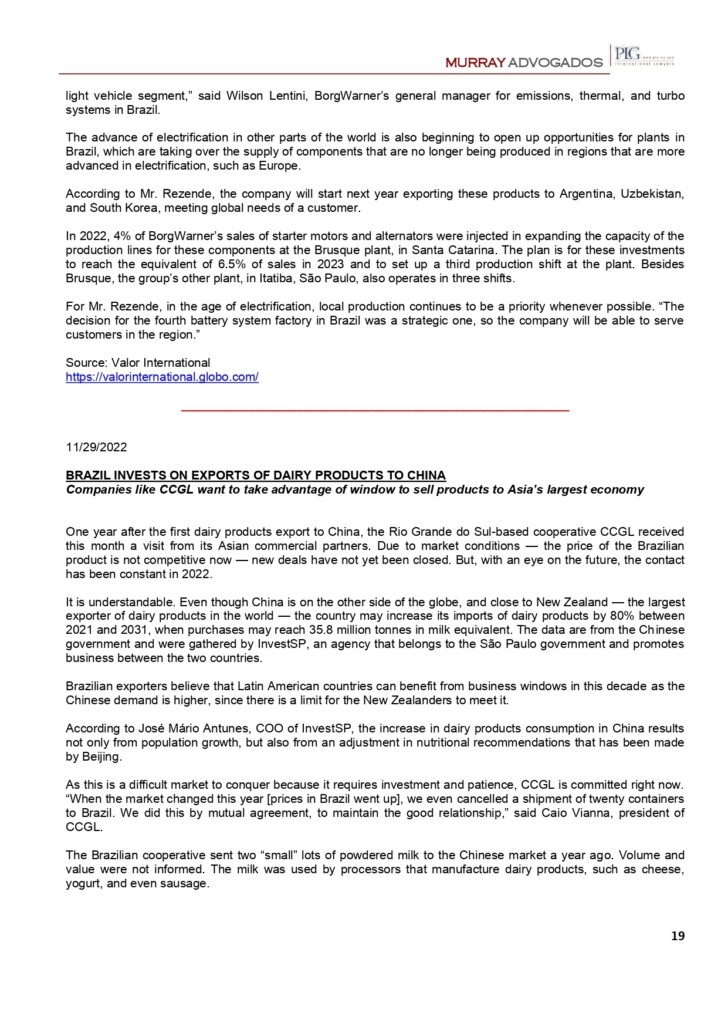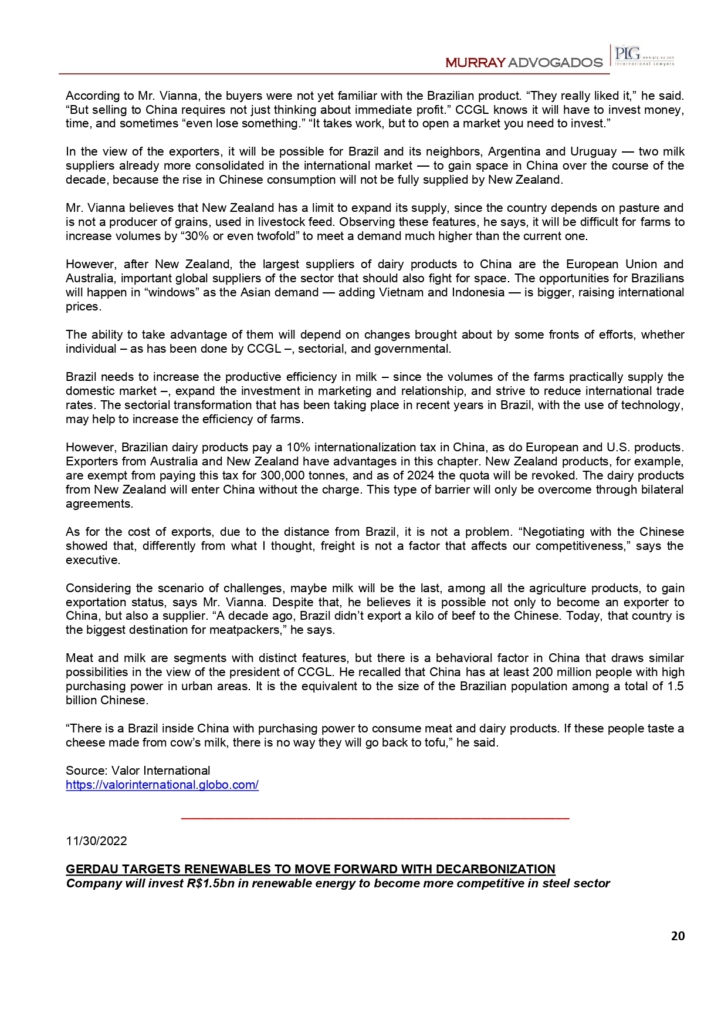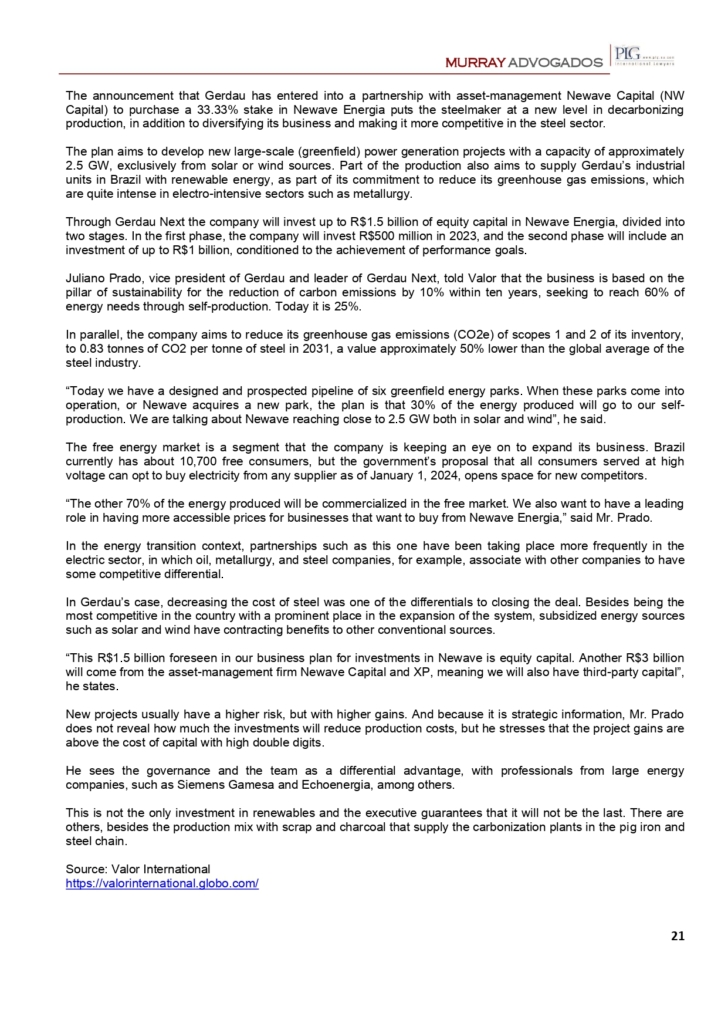Technology does not have defined date to start being commercialized in Brazil
11/30/2022

Brazilian Agricultural Research Corporation (Embrapa) and Helix, a company of the Agroceres group, presented last week the cultivars of the first transgenic corn event developed entirely in Brazil from a fully national public-private partnership started in 2013.
The new BTMAX comes from a gene of the bacterium Bacillus thuringiensis (Bt) and shows high efficacy against fall armyworm. The transgenic plants are not attacked by the pest, which can help increase the production and productivity of crops.
Approved by the National Technical Commission for Biosafety (CTNBio) in June, the technology does not yet have a defined date to start being commercialized in Brazil. Helix also seeks the commercial release of the event in other countries, so that the material can be planted by producers and exported normally.
“BTMAX corn does not present cross-resistance with proteins present in commercial events that already present resistance breakdown,” said Cesar Camilo, a researcher at Helix.
“We have demonstrated that this technology stands out for specifically using Brazil’s biodiversity to solve, also in a specific way, problems of our pests in cultivated plants, pests of the tropical world,” said Urbano Ribeiral Junior, chief financial officer at Agroceres.
“The Brazilian corn is a commodity; the technology is not. We have a huge potential to become a market phenomenon,” said Frederico Durães, general manager of Embrapa’s corn and sorghum division.
*By Rafael Walendorff — Brasília
Source: Valor International
As Embraer’s deliveries of business jets totaled 52 units by September, plane maker is under pressure on the fourth quarter to meet this year’s target of 100 units

11/30/2022
Those interested in buying a new Embraer business jet currently face a waiting line of 2.5 years, as the Brazilian company’s production slots are fully booked by then. The arrival of parts is also delayed, a situation expected to normalize only in 2024.
The demand for business jets, especially the small ones, gained momentum with the Covid-19 pandemic and benefited the Brazilian company, which is the global leader in the segment. For 10 years now, Phenom 300 has been the world’s best-selling aircraft in its category. Still, bottlenecks in the supply chain have limited airplane production in general and required manufacturers to do a lot of tactical planning.
As Embraer’s deliveries of business jets totaled 52 units by September, the company is under pressure on the fourth quarter to meet this year’s target of 100 units.
The scenario is relatively similar in commercial aviation, a business that suffers in particular from a lack of engines. Embraer’s orders have not yet returned to the level seen before the pandemic. Embraer delivered 27 E175 and E195-E2 aircraft by September, less than half the target for the year.
“We have the challenge of delivering 60 aircraft in the commercial aviation business and 100 business jets. We are confident that we can reach the target, but we can miss one or another aircraft and still meet the revenue guidance,” said Antonio Carlos Garcia, Embraer’s chief financial and investor relations officer, on Tuesday.
The company foresees delivering between 60 and 70 commercial aircraft and 100 to 110 business jets this year and had already indicated that it is likely to reach the floor of these ranges.
In the world market for jets with up to 100 seats, the Brazilian plane maker has an 86% share and is likely to reach 95% in the future, because of the limited number of competitors in this segment. The United States is the main market, but Latin America has been developing as well, said Mr. Garcia.
“Who is buying? A lot of new people that buy smaller jets when they join the market,” he said. For the coming years, Embraer’s business aviation business is expected to sell 100 to 120 units a year.
In commercial aviation, the lack of pilots in the United States, the financial crisis faced by airlines, and the lack of engines have curbed sales in volume. In the global market of jets with 100 to 150 seats, the company estimates its market share at 30%. “Embraer will probably need at least two years to operate with higher volumes,” he said.
Embraer, the third-largest plane maker in the world, is on track to post net sales of $8 billion in 2026 if the average pace of revenue growth of 12% seen in recent years is maintained. The future contribution of Eve, the urban air mobility subsidiary, is not included in these projections.
In 2019, before the crisis triggered by the pandemic and the end of talks with Boeing involving the commercial aviation business, Embraer reported net sales of $5.4 billion. For this year, the company expects a range between $4.5 billion and $5 billion. However, due to hurdles in the supply chain, the company’s revenue is likely to be between $4.6 billion and $4.7 billion, said Mr. Garcia.
As for the consolidated operating results, Embraer projects this year an adjusted EBIT margin of 3.5% to 4.5% and an adjusted EBITDA margin of 8% to 9%. The actual results could be even better, according to the executive.
The bottom line is expected to be “slightly negative” in 2022, compared with the original projection of profit. Adjusted cash flow, which returned to positive territory in 2021 after two years of burning cash, could be “much better” than a positive $150 million if year-end deliveries come in on schedule. “The people didn’t stop to watch the Brazilian team’s World Cup game Monday because of the number of planes we have to deliver. The parts are arriving at very short notice to finish the aircraft,” he said.
*By Stella Fontes — São Paulo
Source: Valor International
Company will invest R$1.5bn in renewable energy to become more competitive in steel sector
11/30/2022
The announcement that Gerdau has entered into a partnership with asset-management Newave Capital (NW Capital) to purchase a 33.33% stake in Newave Energia puts the steelmaker at a new level in decarbonizing production, in addition to diversifying its business and making it more competitive in the steel sector.
The plan aims to develop new large-scale (greenfield) power generation projects with a capacity of approximately 2.5 GW, exclusively from solar or wind sources. Part of the production also aims to supply Gerdau’s industrial units in Brazil with renewable energy, as part of its commitment to reduce its greenhouse gas emissions, which are quite intense in electro-intensive sectors such as metallurgy.
Through Gerdau Next the company will invest up to R$1.5 billion of equity capital in Newave Energia, divided into two stages. In the first phase, the company will invest R$500 million in 2023, and the second phase will include an investment of up to R$1 billion, conditioned to the achievement of performance goals.
/i.s3.glbimg.com/v1/AUTH_37554604729d4b2f9f3eb9ad8a691345/internal_photos/bs/2022/T/G/R3foBYRXeAdLM2ovDYwA/30emp-200-next-b2-img01.jpg)
Juliano Prado — Foto: Claudio Belli/Valor
Juliano Prado, vice president of Gerdau and leader of Gerdau Next, told Valor that the business is based on the pillar of sustainability for the reduction of carbon emissions by 10% within ten years, seeking to reach 60% of energy needs through self-production. Today it is 25%.
In parallel, the company aims to reduce its greenhouse gas emissions (CO2e) of scopes 1 and 2 of its inventory, to 0.83 tonnes of CO2 per tonne of steel in 2031, a value approximately 50% lower than the global average of the steel industry.
“Today we have a designed and prospected pipeline of six greenfield energy parks. When these parks come into operation, or Newave acquires a new park, the plan is that 30% of the energy produced will go to our self-production. We are talking about Newave reaching close to 2.5 GW both in solar and wind”, he said.
The free energy market is a segment that the company is keeping an eye on to expand its business. Brazil currently has about 10,700 free consumers, but the government’s proposal that all consumers served at high voltage can opt to buy electricity from any supplier as of January 1, 2024, opens space for new competitors.
“The other 70% of the energy produced will be commercialized in the free market. We also want to have a leading role in having more accessible prices for businesses that want to buy from Newave Energia,” said Mr. Prado.
In the energy transition context, partnerships such as this one have been taking place more frequently in the electric sector, in which oil, metallurgy, and steel companies, for example, associate with other companies to have some competitive differential.
In Gerdau’s case, decreasing the cost of steel was one of the differentials to closing the deal. Besides being the most competitive in the country with a prominent place in the expansion of the system, subsidized energy sources such as solar and wind have contracting benefits to other conventional sources.
“This R$1.5 billion foreseen in our business plan for investments in Newave is equity capital. Another R$3 billion will come from the asset-management firm Newave Capital and XP, meaning we will also have third-party capital”, he states.
New projects usually have a higher risk, but with higher gains. And because it is strategic information, Mr. Prado does not reveal how much the investments will reduce production costs, but he stresses that the project gains are above the cost of capital with high double digits.
He sees the governance and the team as a differential advantage, with professionals from large energy companies, such as Siemens Gamesa and Echoenergia, among others.
This is not the only investment in renewables and the executive guarantees that it will not be the last. There are others, besides the production mix with scrap and charcoal that supply the carbonization plants in the pig iron and steel chain.
*By Robson Rodrigues — São Paulo
Source: Valor International
Yet, government is looking for options to fund infrastructure investments
11/29/2022
/i.s3.glbimg.com/v1/AUTH_37554604729d4b2f9f3eb9ad8a691345/internal_photos/bs/2022/I/i/ToVJDERcWwumXbFBfpmw/29agr-100-parana-b12-img01.jpg)
Norberto Ortigara — Foto: Ari Dias/AEN
The reaction of the productive sector in Paraná has buried the state government’s project that intended to tax agribusiness to create a fund for investment in infrastructure, an area that was left unattended after the federal government lowered the sales tax ICMS on fuel on the eve of the elections, plus the fact that the state administration did not renew highway concessions.
Norberto Ortigara, the secretary of agriculture of Paraná, told Valor that the government understood the producers’ revolt about the way the project was presented. The sector, which was responsible for the re-election of Governor Ratinho Júnior, had a strong reaction against the taxation “shoved down its throat” which prevented the drama from having a different outcome than in Goiás, where the state’s deputies approved a similar proposal. “It didn’t sit well with the sector, we acknowledge that they got upset.”
According to Mr. Ortigara, the state administration wants to negotiate a different and viable text with the productive sectors to create a “palatable” contribution for investments in infrastructure.
The fiscal instability is delicate and will require some tax collection measures, said Mr. Ortigara, who is unsure about the possibility of approving the new measure this year. “If nothing is done, even maintaining the current highways will be difficult. There is a brutal drop in tax collection in the state and the municipalities,” he pondered.
The intention is to promote a “dialogue” with the agribusiness and other sectors of the Paraná economy that use the state infrastructure for the collective construction of an alternative. “I no longer believe in that bill due to the way it was presented. We need to build a greater understanding starting from scratch,” he said. “We have to see if there is room to create something similar and if we can make some kind of contribution so that there can be investments.”
But the sector is not willing to give in. Ágide Meneguette, president of the Federation of Agriculture of the State (Faep), reinforced that the sector will not pay the bill alone. “We know that the cash flow has decreased, but we will not accept any kind of new contribution or taxation. If it comes, we will work against it,” he told Valor.
José Roberto Ricken, president of the Paraná Organization of Cooperatives (Ocepar), pointed out that the bill was “absolutely unfeasible” given the scenario of increased costs in the field and climate risks. “Why producers are the only ones to pay for the infrastructure? Are they the only ones who use the roads? There is no room for this type of charge. It will be chaos if this prevails. We are mobilized to prevent this from happening”, he affirmed.
Mr. Meneguette recalled that the entity supported the increase in the ICMS tax rate in the state for some products, from 18% to 19%, approved by the Legislative Assembly this week. “We have to split this bill. It is fair that the society, in general, pays for Bolsonaro’s act of reducing taxes and affecting the budgets of states and municipalities”, he said.
The victory of the sector this week, with the government retreat and withdrawal of the taxation project, is the result of the “democratic pressure” that showed the importance of producers actively participating in the country’s decisions, he said. “The pressure has shaken some deputies, there is no willingness or vote for this anymore.”
In Goiás, there was a riot and invasion of the floor vote, but even so, the deputies approved the taxation. “We are against invading and wreaking havoc on the deputy’s house because we have always fought the invasion of our properties, but we want respect. Violence will not help us to achieve our goals,” said Mr. Meneguette.
According to the Faep leader, they have been warning the government about infrastructure problems since 2017, but neither the current nor the previous administration decided to renew the highway concessions, which expired this year. “I advocate the least possible participation of the state in the economy and in the lives of Brazilians. The state does not have the agility of private initiative,” he said.
The government says that it does not have funds to maintain the highways or to start new projects, such as the paving of rural roads. “The majority of Paraná’s producers have less than 50 hectares, whose income barely guarantees their survival. If they were not organized in cooperatives, they would no longer be in rural activity,” added Mr. Ricken, of Ocepar. “The profitability of the companies that operate in the commercialization of grains doesn’t exceed 2%, on average. So where will these funds come from?”
*By Rafael Walendorff — Brasília
Source: Valor International
Project is installed at a substation in Registro, São Paulo, operated by the company
11/29/2022
/i.s3.glbimg.com/v1/AUTH_37554604729d4b2f9f3eb9ad8a691345/internal_photos/bs/2022/X/G/rcDBRGQKGYlKDkq1DRHQ/270722isa26.jpg)
Rui Chammas — Foto: Silvia Zamboni/Valor
Isa Cteep has put into operation the first large-scale battery power storage system in the Brazilian transmission system. The battery project is installed at a substation in Registro, São Paulo, also operated by the company.
The battery systems have 30 megawatts of power and are capable of delivering 60 megawatt-hours of energy for two hours to a region of up to 2 million people. The goal is for them to act during peak consumption periods on the Southern Coast of São Paulo during the summer, especially in the year-end holidays, ensuring additional supply.
In all, there are 10 containers with 180 racks of lithium batteries, which were imported from China, and occupy an area of nearly 5,000 square meters, equivalent to half of a soccer field. The executive director of projects, Dayron Urrego, and the company’s chief executive, Rui Chammas, said that the technology is expected to avoid interruptions in the power supply during load periods.
The system is planned to go into operation the moment Brazil’s national grid operator ONS gives the order. The company estimates that they will probably be used on average 12 times a year. The criterion for choosing the region was that studies pointed out that the southern coast of São Paulo has a power deficiency and should be supplied by a transmission line from the 2017 auction, which is not yet ready.
“During the summer, it is common to have a higher demand than the system can supply, so the batteries come in to supply the peaks of this demand, but they can also have other uses,” said Mr. Urrego. “The biggest peak is in the summer because of the use of air-conditioning, besides moments like Christmas and New Year’s Eve.”
Storage systems are considered the next technological frontier in the energy transition, because they play the role of guarantee of supply since they have characteristics – such as inertia, frequency, and voltage controllers – necessary for the operation of the system with due security and resilience.
In addition, the insertion of intermittent renewable generation, such as solar and wind, which cannot be stored in their original forms, has generated a series of operational complexities for the electric system.
This instability creates a challenge for the ONS, which orchestrates the mix of all sources to meet real-time demand, which also varies. Batteries are important because their command is in human hands and does not depend on the sun, wind, and rain.
“Energy transition brings opportunities and responsibility to make intermittent renewable energy be absorbed in the best possible way. We who invested in the first digital stations for better control of the equipment now get into batteries and think about using this technology and flow control,” said Mr. Chammas.
The amount invested approved by the Brazilian Electricity Regulatory Agency (Aneel) was R$146 million and is part of a total disbursement for reinforcement and improvement, which in the third quarter of this year reached R$471 million.
As a result, the Colombian company will have allowed annual revenues (RAP) of R$27 million. Mr. Chammas said that the regulator’s determination was that they should be put in place before the beginning of the summer – which in Brazil starts on December 21 – so that they would be entitled to the investment.
“Aneel authorized us to do the project. In one year, we did the engineering project, acquired the batteries from China, prepared the land, installed the construction, and energized it,” he said.
Because it is a disruptive technology, this topic still has no regulation at Aneel. Mr. Chammas considers it fortunate that the process fell under the rapporteurship of the agency’s director Sandoval Feitosa, who advocated the project’s approval.
The next reserve power auction is expected to be neutral regarding the technology to be adopted. Until now, these auctions were oriented toward gas-fired thermal generation. “If this is confirmed, we will have a great opportunity,” the CEO said.
*By Robson Rodrigues — São Paulo
Source: Valor International
Companies like CCGL want to take advantage of window to sell products to Asia’s largest economy
29/11/2022
One year after the first dairy products export to China, the Rio Grande do Sul-based cooperative CCGL received this month a visit from its Asian commercial partners. Due to market conditions — the price of the Brazilian product is not competitive now — new deals have not yet been closed. But, with an eye on the future, the contact has been constant in 2022.
It is understandable. Even though China is on the other side of the globe, and close to New Zealand — the largest exporter of dairy products in the world — the country may increase its imports of dairy products by 80% between 2021 and 2031, when purchases may reach 35.8 million tonnes in milk equivalent. The data are from the Chinese government and were gathered by InvestSP, an agency that belongs to the São Paulo government and promotes business between the two countries.
Brazilian exporters believe that Latin American countries can benefit from business windows in this decade as the Chinese demand is higher, since there is a limit for the New Zealanders to meet it.
According to José Mário Antunes, COO of InvestSP, the increase in dairy products consumption in China results not only from population growth, but also from an adjustment in nutritional recommendations that has been made by Beijing.
/i.s3.glbimg.com/v1/AUTH_37554604729d4b2f9f3eb9ad8a691345/internal_photos/bs/2021/I/w/pyb4t9T8KxQSxbE14YUA/16agr-300-leite-b10-img01.jpg)
Caio Vianna — Foto: Divulgação
As this is a difficult market to conquer because it requires investment and patience, CCGL is committed right now. “When the market changed this year [prices in Brazil went up], we even cancelled a shipment of twenty containers to Brazil. We did this by mutual agreement, to maintain the good relationship,” said Caio Vianna, president of CCGL.
The Brazilian cooperative sent two “small” lots of powdered milk to the Chinese market a year ago. Volume and value were not informed. The milk was used by processors that manufacture dairy products, such as cheese, yogurt, and even sausage.
According to Mr. Vianna, the buyers were not yet familiar with the Brazilian product. “They really liked it,” he said. “But selling to China requires not just thinking about immediate profit.” CCGL knows it will have to invest money, time, and sometimes “even lose something.” “It takes work, but to open a market you need to invest.”
In the view of the exporters, it will be possible for Brazil and its neighbors, Argentina and Uruguay — two milk suppliers already more consolidated in the international market — to gain space in China over the course of the decade, because the rise in Chinese consumption will not be fully supplied by New Zealand.
Mr. Vianna believes that New Zealand has a limit to expand its supply, since the country depends on pasture and is not a producer of grains, used in livestock feed. Observing these features, he says, it will be difficult for farms to increase volumes by “30% or even twofold” to meet a demand much higher than the current one.
However, after New Zealand, the largest suppliers of dairy products to China are the European Union and Australia, important global suppliers of the sector that should also fight for space. The opportunities for Brazilians will happen in “windows” as the Asian demand — adding Vietnam and Indonesia — is bigger, raising international prices.
The ability to take advantage of them will depend on changes brought about by some fronts of efforts, whether individual – as has been done by CCGL –, sectorial, and governmental.
Brazil needs to increase the productive efficiency in milk – since the volumes of the farms practically supply the domestic market –, expand the investment in marketing and relationship, and strive to reduce international trade rates. The sectorial transformation that has been taking place in recent years in Brazil, with the use of technology, may help to increase the efficiency of farms.
However, Brazilian dairy products pay a 10% internationalization tax in China, as do European and U.S. products. Exporters from Australia and New Zealand have advantages in this chapter. New Zealand products, for example, are exempt from paying this tax for 300,000 tonnes, and as of 2024 the quota will be revoked. The dairy products from New Zealand will enter China without the charge. This type of barrier will only be overcome through bilateral agreements.
As for the cost of exports, due to the distance from Brazil, it is not a problem. “Negotiating with the Chinese showed that, differently from what I thought, freight is not a factor that affects our competitiveness,” says the executive.
Considering the scenario of challenges, maybe milk will be the last, among all the agriculture products, to gain exportation status, says Mr. Vianna. Despite that, he believes it is possible not only to become an exporter to China, but also a supplier. “A decade ago, Brazil didn’t export a kilo of beef to the Chinese. Today, that country is the biggest destination for meatpackers,” he says.
Meat and milk are segments with distinct features, but there is a behavioral factor in China that draws similar possibilities in the view of the president of CCGL. He recalled that China has at least 200 million people with high purchasing power in urban areas. It is the equivalent to the size of the Brazilian population among a total of 1.5 billion Chinese.
“There is a Brazil inside China with purchasing power to consume meat and dairy products. If these people taste a cheese made from cow’s milk, there is no way they will go back to tofu,” he said.
*By Erica Polo — São Paulo
Source: Valor International
Subsidy is expected to reach R$30.3bn in 2023, and economists advocate gradual abandonment of the model
11/29/2022
With a drop in direct job generation in recent years, the departure of large companies from the region, and an increase in the tax cost to the federal government, the Manaus Free Trade Zone is going through one of the most sensitive moments since its creation in 1967. In recent years, the effectiveness of the free trade area has been placed at the center of the debate on a reform of tax laws.
Economists critical of the model say the Free Trade Zone is responsible for Brazil’s largest tax waiver, is ineffective, and has not fulfilled its role. They advocate a gradual migration towards the end of subsidies.
The Secretariat of Federal Revenue estimates that, by 2023, the tax waiver with the Free Trade Zone will be R$30.3 billion, a figure that has been growing in recent years. This year, the Federal Court of Accounts (TCU) said that the region will represent the largest tax waiver of the federal government next year – 16.1% of total tax expenditure.
Representatives of the local industry, academics, and members of the federal government in charge of supervising the region evaluate that despite the drop in job generation, Manaus Trade Zone is still key for the development of the Amazonas state and the consequent preservation of the forest.
With 41,773 registered companies — 18,054 of them only in the Amazonas state — today benefited from tax breaks, such as the Import Tax (II), Export Tax (IE), and Industrialized Products Tax (IPI), as well as social taxes PIS and Cofins breaks, the industrial hub, which represents 2.4% of the country’s industrial GDP, has been reporting a drop in the number of jobs in the last decades.
In 2012, for example, the benefited companies employed 120,000 people, according to the statistics agency IBGE, which represented 6.5% of the formal activity in the region. By the end of 2021, the number fell to 103,000, taking the index down to 4.59%. Since 2020, more than 80 companies departed from the region.
Business leaders of the region fear that a possible tax overhaul in the coming years that fails to preserve the free trade zone will result in the withdrawal of more companies. According to the Superintendence of the Manaus Free Trade Zone (Suframa), an agency linked to the Special Secretariat for Productivity and Competitiveness (Sepec) of the Ministry of Economy, more than 50% of the entire population of Manaus, or 2.25 million people, depends on the Free Trade Zone.
“The per capita income would be half of what it is today if there was no program,” said Márcio Holland, a professor at Fundação Getulio Vargas (FGV), coordinator of research on the region’s impacts, effectiveness, and opportunities.
According to Mr. Holland, a former Secretary of Economic Policy at the Ministry of Finance (2011-2014), the biggest challenge of the Manaus Free Trade Zone is how to sustain the attraction of investments to the region with less dependence on tax breaks.
“As an unfolding of this challenge, Brazil needs to promote a broad and deep tax overhaul that includes the adoption of VAT [value-added tax] in consumption taxation. A good VAT, however, because it is calculated at the destination, which overturns the structure of tax incentives that bring investments to the state of Amazonas,” he said. “How to conduct the necessary reform of the Brazilian tax system and preserve the existing investments in the region is a great challenge.”
/i.s3.glbimg.com/v1/AUTH_37554604729d4b2f9f3eb9ad8a691345/internal_photos/bs/2022/t/A/PBJnv2SOAL1NqnFkXivA/29bra-100-zona-a4-img02.jpg)
Augusto Cesar Rocha — Foto: Fabiola Abess/Divulgação
On the other hand, academics say that it is possible to replace the high cost of the region. “The attempt to induce the industrialization of the Manaus region assumed that a few years of subsidy would be enough to create a new hub, with population growth and strong relations with the rest of the national economy and abroad. This did not happen,” said economist Marcos Mendes, an associate researcher at the business school Insper. “What we have is an enclave that depends on high subsidies to survive. The Free Trade Zone cannot be extinguished overnight, but a new model can replace it over the course of a decade.”
One who agrees is economic consultant Zeina Latif, a former Secretary of Economic Development in São Paulo. “It is important to discuss a transition of the program,” she said. “The ideal would be a discussion about how to help each region exploit its comparative advantages, which is not the case with the Free Trade Zone. Trying to develop artificially proves to be not very effective.”
This year, although the tax overhaul did not move forward, there was apprehension among companies in the region from the edition of decrees that reduced the IPI rates for products that were also manufactured in the Manaus Free Trade Zone. After an appeal to the Supreme Court, Justice Alexandre de Moraes suspended portions of the decrees, because the new rules could hinder the region.
“[The new rule] shows itself equally capable of impacting the regional development model that the Federal Constitution decided to maintain, whether in its economic aspect, by compromising the ‘unequalization’ of the region as a form of compensation for the higher costs arising from the challenges faced by the local industry,” Mr. Moraes wrote at the time.
Business leaders from the Free Trade Zone link the drop in jobs in recent years to legal tax insecurity in the region. “You can’t change the rule of the game after the game starts. We need to establish the rules and keep them. This is what afflicts the business activity in the Manaus Free Trade Zone,” said Luiz Augusto Rocha, head of the board of the Industrial Center of the State of Amazonas (CIEAM).
With the expectation that the Lula administration will proceed with a tax overhaul, the business leaders of the region are doing the math and negotiating with Congress a way to mitigate the impacts and preserve the activity in Amazonas. Today, the biggest concern is with the proposal to amend the constitution (PEC) 45, of the Chamber of Deputies, which is based on the assumption that there should be no tax breaks. “It would be the death of the Manaus Free Trade Zone,” said Mr. Rocha.
Senate PEC 110, on the other hand, has its own chapter for the Manaus Free Trade Zone. This text, according to the region’s businesspeople, is more favorable, but still needs improvements: the main fear in this proposal, for the region, is the regulation, by supplementary law, of the period for maintaining tax breaks in the region — currently guaranteed by the Constitution until 2073.
“A tax reform has to consider the region. There are 25 million inhabitants in the whole Amazon, and we need to think about it strategically,” said General Algacir Antonio Polsin, current head of Suframa, appointed to the position by President Jair Bolsonaro – and an advocate of the model. During his term in office, Suframa has sought to get closer to research institutes and universities in an attempt to boost the region. Today, there are three universities and 131 research institutes in the region.
Mr. Polsin evaluates that, besides the tax issues, there are two other main challenges for the future of the region: attracting investment and the maintenance of the labor force due to the advance of technology in the industry and the change in consumption standards. “We have to take advantage of what makes us stand out, which are the products of the land. We can’t depend on the sale of commodities,” he said.
As the Ministry of Economy may be split in Lula’s administration, it is expected that Suframa (in charge of inspecting companies in the region and stimulating development) will be linked again to the Ministry of Industry. This change could broaden the dialogue of the companies with the government, the general said.
Besides the tax issues, which are directly related to economic development and the maintenance of employment, there is still the logistical challenge because of the difficulty of local industry to transport products by other means, given the dependence on the river. In the view of Augusto Rocha, a professor at the Federal University of Amazonas (Ufam), the complexity of the issue involves building infrastructures that respect and protect the environment and the people of the region, “inducing economic activities that have the magnitude to justify such investments and, simultaneously, do not cause devastating effects.”
“The industrial hub of Manaus has a set of products. The best infrastructure will be the one suitable to the set of products produced there. It will not be railroads or trains, because these alternatives are suitable for mining or agriculture. It will not be waterways, for the same reason. Thus, for motorcycles — which will be distributed throughout the country — the most appropriate alternative would be the road,” said the professor.
The main demand from the infrastructure standpoint for the region is the completion of the BR 319 highway which, in the past, made possible the connection between Manaus and Porto Velho — today, this connection is entirely made by boat, which raises the cost for the industry. This is because today the so-called “middle stretch” of the road, about 400 kilometers long, is the most critical and is not paved, which prevents the transport of goods by land. According to government data, R$1.3 billion would be needed to complete the reconstruction of the highway.
Environmentalists, on the other hand, defend that, if the road is reactivated, it would favor and consequently facilitate the deforestation of the Amazon Forest. “The environmentalists’ argument is correct, and we need them to face the issue, so we can build a sustainable model for this highway,” the professor pointed out. “If we don’t, the forest will be destroyed to the guts.”
*By Guilherme Pimenta — Manaus
Source: Valor International
Despite that, result propped up by services and employment is considered positive
11/28/2022
Brazil’s third-quarter GDP growth is expected to slow down to half the rate of the previous three-month period, considering the projections collected by Valor and data released by the statistics agency IBGE so far.
This deceleration was already expected by economists due to external turbulences and Brazil’s very contractionary monetary policy. Even so, analysts believe that the third-quarter GDP growth might have been better than anticipated, as the services sector shows greater resilience and the labor market is still heated.
The median of 75 projections from financial and consulting firms indicates a 0.6% GDP growth in the third quarter compared to the second, when it climbed 1.2%. IBGE’s official data for the third quarter will be released on Thursday, as well as potential revisions to previous quarters.
In the year-over-year comparison, there may even be a slight acceleration in the GDP, to 3.6% in the third quarter from 3.2% in the second quarter, according to the median of 71 analysts.
Since the last quarter of last year, there has been an average GDP growth of 1% in quarterly comparisons, which reflects the favorable picture of the global economy driven by high commodity prices, the reopening of the Brazilian economy after the Covid-19 pandemic eased, and fiscal stimuli, such as the authorization to withdraw money from Workers’ Severance Fund (FGTS) accounts and the early payment of the 13th salary, a year-end bonus, to retirees, said Felipe Salles, the chief economist of C6 Bank.
In his view, the scenario has already started to change in the second half of this year: the world is growing at a slower pace, the United States is raising interest rates, Europe faces energy shocks and the risk of recession, and China is undergoing a strong deceleration impacted by its “zero-Covid” policy. Commodity prices are also starting to fall, with repercussions for the Brazilian economy, said Mr. Salles.
Here in Brazil, the effect of the reopening of the economy, which benefited the services industry in the first half of the year, is beginning to lose steam, according to the economist, and a clearer effect of the tight monetary policy is expected. Mr. Salles projects a 0.4% GDP growth in the third quarter compared to the second. “These external and domestic headwinds are already affecting confidence indexes,” he said, adding that this is expected to cool down the sector.
/i.s3.glbimg.com/v1/AUTH_37554604729d4b2f9f3eb9ad8a691345/internal_photos/bs/2022/s/l/AL2p7ZQIenyQnCbdWIxg/luisotavioleapib-20-20leconomistachefebancoalfa-1024x576.jpg)
Luis Otavio Leal — Foto: Divulgação
Still, on the supply side, activity is expected to be sustained in the third quarter by services (up 0.8% compared to the second quarter, according to the median obtained by Valor) and by agriculture (2%), the latter benefited by the good performance of the second yearly crop of corn, said Luis Otavio Leal, the chief economist of Banco Alfa.
Positive surprises in both sectors even made Santander revise its projection for third-quarter GDP to growth to 0.9% from 0.6%. “This updated forecast highlights a [new] forecast of stronger GDP, bringing a strong result of four gains in a row,” said economist Lucas Maynard.
Industry, on the other hand, probably saw a weak performance, but still positive (0.3%), driven by the transformation and utilities, said Itaú Unibanco, which also adjusted its projection for the third-quarter GDP to 0.6% from 0.4% because of services.
“There will probably be some deceleration in industrial GDP, both in the manufacturing and extractive industries. But the services part is still quite strong and resilient, especially transport services, which weigh a lot in the model,” said Danilo Passos, an economist at Wealth High Governance (WHG).
Laura Moraes, an economist at Neo Investimentos, said she does not foresee a rise that big in services, which puts Neo on the more cautious end of GDP projections, at 0.2%. “In fact, services have been surprising throughout the year, but we are not capturing all of this they see. Still, it’s a good number and I wouldn’t be surprised if the result came in higher,” said the economist.
On the demand side, growth is sustained by household consumption (0.6%) thanks to the effect of vote-getting measures put in place by the federal government – such as the increase in the cash-transfer program Auxílio Brasil to R$600 a month and a slower inflation as a result of a reduction in fuel prices. The labor market plays a role as well, as it has been recovering fast and intensely.
The Gross Fixed Capital Formation, a measure for investments in the GDP, probably increased by 1.3%, according to the median collected, “mainly due to the higher domestic absorption of capital goods, notably machinery and equipment, also related to the agricultural sector,” said Mr. Maynard, with Santander.
“We will probably see some contribution from government consumption, which was flat,” said Mr. Leal. Valor’s median indicates an increase of 0.6%.
As a result, the economists’ assessment is that domestic demand – the sum of household and government consumption, investments, and inventory changes – will be strong. Safra, which expects GDP growth of 0.4% in the third quarter compared to the second quarter, says that this growth “benefited from fiscal stimuli in the recent period, which is likely to translate into an one-percentage-point growth in domestic demand met by falling inventories and strong imports.”
The median expectation for the external sector in the third quarter is an increase of 3% in exports and 3.7% in imports.
Although Alfa is on a more optimistic end of the projections for third-quarter GDP growth, at 0.9%, Mr. Leal said that the scenario expected for the period is unlikely to differ much among consultancies and financial firms in terms of the factors that supported growth. “Maybe we are expecting a greater impact from the slowdown in inflation and the measures put in place in view of the election.”
For Mr. Passos, with WHG, who also expects a 0.9% rise for GDP in the third quarter, a weaker third quarter than the second – even if the difference is not so great by his projection – “means that the economy is losing a little momentum,” he said.
For the fourth quarter of 2022, the median expectation from the projections of 67 analysts is of a stagnant economy. “This 0% projection has the risk of being more negative, especially if credit comes in lower. We see default growing, new concessions adjusted for inflation cooling down and entering a trajectory that is consistent with monetary policy,” said Mr. Moraes, with Neo.
For Alfa, which expects a decrease of 0.5% compared to the previous three months, the period is likely to be affected by a slower labor market at the same time in which the impact of interest rates, which was somewhat hidden in the third quarter by government stimuli, will become clearer, said Mr. Leal. And investments should also feel the rise in interest rates more strongly, said Mr. Salles, with C6, who projects that fourth-quarter GDP will drop 0.3%.
There are, however, some unknowns. Among them, the effect yet to be verified of the atypical sequence of FIFA World Cup, Black Friday, and year-end holidays. “We do not know the impact of this shopping days, something that our models do not reach,” said Mr. Leal.
Mr. Passos, with WHG, says he does not see, with the information available so far, a negative GDP in the fourth quarter – he projects 0.3% growth. “Especially if the service sector comes in very well in the third quarter, which generates a positive statistical carryover,” he said.
The median projection of 83 analysts indicates GDP growth of 2.8% this year, before slowing down to 0.7% in 2023.
*By Anaïs Fernandes, Marta Watanabe — São Paulo
Source: Valor International
Brazil’s securities market authority also needs new public hiring test, according to current and previous directors
11/28/2022
In the 20 years between the Lula administration back in 2003 and his third term in office starting in 2023, Brazil’s capital market has evolved as never. But despite several IPOs, a record number of investors, and the emergence of new products, the Securities and Exchange Commission of Brazil (CVM), the country’s market regulator, has shrunk in size. There has not been a single public hiring test since 2010, and the financial independence provided by law has never happened in practice.
The prevailing assessment is that the financing of the agency is a delicate matter because of the discussions about public spending in the new administration. On the other hand, people close to President-elect Luiz Inácio Lula da Silva’s team have signaled that a public hiring test would be feasible.
The Brazilian capital market began to take off in the 2000s, during Mr. Lula’s first term in office. Novo Mercado was created at the time and established stricter corporate governance rules and greater transparency for the market. In the following years, in 2006 and 2007, the country experienced the first IPO boom, which consolidated the new phase. A new record occurred between 2020 and 2021, with 73 offerings.
Currently, there are nearly 700 listed companies on the CVM, which represent a fraction of the 78,162 entities regulated by the capital market authority. They include investment funds, brokerage firms, administrators, analysts, consultants, investment advisors, distributors, credit rating agencies, and securitization companies, among others. CVM operates with a surplus. Annually, it collects about R$800 million from inspection fees, a counterpart for the regulator’s service. The regular budget totals nearly R$260 million and discretionary spending is historically around R$25 million.
Law 10.303, of 2001, provided that funds from the collection of the inspection fee can be used to fund the activities of the agency, but this financial autonomy does not exist in fact: the funds go to the single account of the National Treasury. CVM has to prepare its budget proposal and send it to the Ministry of Economy, which can change it. The general budget is forwarded to Congress, which can also change the amounts. In 2022, the agency’s budget was under threat – it was almost cut by more than 50%, but, at the end, managed to keep it in full.
/i.s3.glbimg.com/v1/AUTH_37554604729d4b2f9f3eb9ad8a691345/internal_photos/bs/2022/W/a/llPECqQOCCEeay1aKeBA/130622joaopedro87.jpg)
Joao Pedro Nascimento — Foto: Leo Pinheiro/Valor
CVM has been warning in recent years about the increased level of risk related to the lack of personnel. A number of employees was moved from the Brazilian Development Bank (BNDES) and other state-owned companies to CVM, but it is insufficient in view of the growth of the market. CVM President João Pedro Nascimento speaks of funding and personnel problems even before taking office, as predecessors like Marcelo Barbosa and Leonardo Pereira did before him.
“CVM has reached a limit situation. We badly need a public hiring test in order to be prepared to serve a market that grows in size and complexity,” said Mr. Nascimento. This year, preparations were started for a hiring test to be held in 2023. And now, for it to materialize, the approval of the Lula administration will be necessary. The matter is a priority to be dealt with by the presidential transition team.
On the financing side, the current president of the CVM intends to create a capital market improvement fund, with part of the funds from the fees, which also depends on Brasília. “It is important to be able to predict that a certain amount will be allocated to CVM. In other words, predictability. Then we can organize ourselves to make the best use of those funds.”
In response to the special secretariat of treasury and budget, CVM has indicated representatives who will work to meet the demands of the presidential transition team, including the agency’s chief.
Those who led CVM know the difficulties. Economist Maria Helena Santana held the position between 2007 and 2012, when the market was a fraction of its current size. “[Back then], we didn’t manage to keep part of the money with CVM, and proportionally, today, the amount that stays in the hands of the agency is even smaller,” she said. The agency needs to have a minimum of predictability to make long-term plans, she said.
Under Marcelo Trindade, Ms. Santana’s predecessor, CVM had its funding most assured. The lawyer took over in 2004, replacing Luiz Leonardo Cantidiano. After facing difficulties in his relationship with the Ministry of Finance, Mr. Cantidiano resigned. “Because it generated this serious consequence, the government came to its senses and ensured the conditions for the functioning of the agency, from the standpoint of autonomy and financing,” said Mr. Trindade.
After the episode with Mr. Cantidiano, there are no more reports of government interference in CVM, which continues its work independently. “I hope the good times will come back, and I wish the new administration remembers its successful experience so that things work well,” said Mr. Trindade.
Another historical problem faced by CVM is the slowness in defining new board members, who have fixed terms. In the Bolsonaro administration, for example, the board spent most of 2020 with only four members and 2021 with only three, out of a total of five. Mr. Nascimento was an exception, as he took office immediately after the departure of Mr. Barbosa, his predecessor.
Maintaining the current composition, the next vacancy in the board should open at the end of 2023, as the term of director Flávia Perlingeiro will come to an end. Regarding CVM’s work, lawyers and former directors of the agency told Valor there is independence to establish a liberal regulatory agenda and make decisions. “The profile of the new minister will make all the difference in the nominations and projects for CVM. João Pedro [Nascimento] will work hard to build a good relationship,” a former director says.
*By Juliana Schincariol — Rio de Janeiro
Source: Valor International

